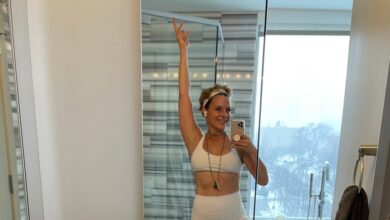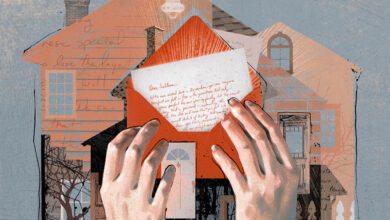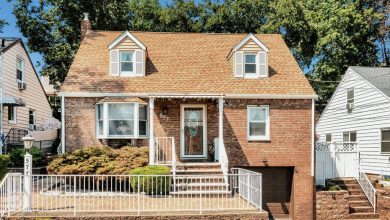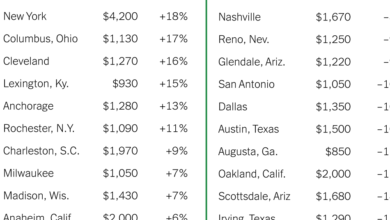Edison, N.J.: A Diverse Suburb in a Convenient Location

When Bhavesh Gala and Taral Shah lived on Staten Island, they relied on their families in India to send packages of their favorite foods. But since the couple, who immigrated to the United States in the early 2000s, moved to Edison, N.J., they no longer find themselves depending on the family pipeline for homegrown products.
“I told my mother, ‘Mom, I live near Oak Tree Road. You don’t have to send me anything,” said Dr. Gala, 45, a cardiologist who moved to Edison in 2020 with Dr. Shah, 41, an oncologist, in search of good schools for their two sons. The couple paid $1.05 million for a brand-new five-bedroom house.
Oak Tree Road — a shopping district known as Little India for its concentration of Indian restaurants and stores — is the most visible symbol of how much Edison’s South Asian population has grown in recent years. On the busy street, Indian immigrants “are so far from home — but they are at home,” said Sanjeev Aneja, the broker-owner of On Track Realty, in Edison.
In fact, the Middlesex County township has attracted residents from across Asia — the population of more than 100,000 is about 49 percent Asian, 29 percent white, 11 percent Hispanic and 9 percent Black, according to census figures.
For home buyers, Edison has two key advantages, said Ketan Kenia, an agent with Keller Williams, in Metuchen: its highly regarded school system and its location, about an hour from Manhattan.
“We have a saying: All roads lead to Edison,” said Sam Joshi, 32, the mayor, who grew up in town. The New Jersey Turnpike and Interstate 287 both run through Edison, and the Garden State Parkway is nearby. New Jersey Transit’s Northeast Corridor rail line also serves Edison.
Those transportation networks were important to Pranav Gada, 42, an information technology salesman, and his wife, Kalpa Gada, 40, a stay-at-home mother. Mr. Gada travels often for work, and wanted to be near highways and Newark Liberty International Airport. The couple, who have two children, moved to a rental in Edison from East Rutherford in 2017, then bought a three-bedroom townhouse in 2020, for $460,000.
But as much as location factored into their move, “the primary reason was the education,” Mr. Gada said. Their 14-year-old son has flourished in school and also plays cricket — an important connection to the family’s roots in India, Mr. Gada said.
Abhinav Jindal, 43, a vice president for sales at an information technology company, and his wife, Sonal Nohria, 40, a technology project manager, moved to Edison from Jersey City in September 2018, paying $771,000 for a five-bedroom house. Their 11-year-old daughter has been active in swimming and in Indian dance, and their 8-year-old son is involved in swimming, soccer and cricket.
“I need my kids to explore everything, and I found this in Edison,” Mr. Jindal said. “Both Indian values and culture, and American sports. They are getting the best of both worlds.”
What You’ll Find
Edison is in Middlesex County, about 35 miles southwest of Midtown Manhattan. With around 107,000 residents spread over 30 square miles, it’s New Jersey’s sixth most-populous municipality. But unlike many of the state’s largest municipalities, it has a suburban landscape. Edison is bounded to the north by Scotch Plains and Clark; to the east by Woodbridge; to the west by South Plainfield, Highland Park and Piscataway; and to the south by the Raritan River.
Buyers will find a variety of home styles, including Cape Cods, split-levels and ranches from the 1960s and 1970s, as well as larger houses built in the 1990s and 2000s, and condominiums.
What You’ll Pay
A recent check of Zillow found a wide range of prices, from around $60,000 for a two-bedroom mobile home to $2 million for a new five-bedroom house on half an acre.
According to New Jersey Realtors, 1,077 homes sold in Edison in the 12 months ending May 31, about the same as in the preceding 12 months. But the median sale price rose to $450,000, up from $420,000.
According to Mr. Kenia, demand for homes in the township remains strong despite the recent increase in mortgage rates, and inventory remains low.
The Vibe
Edison doesn’t have a traditional shopping district, but residents can find that experience in the walkable downtown of Metuchen, a separate borough that is nestled inside Edison, like the hole in a doughnut. Shopping and restaurants are also available at the Menlo Park Mall, and on Oak Tree Road.
Edison Towne Square is a restaurant, retail and entertainment center being developed on the 100-acre site of a Ford Motor Company plant that shut down in 2004.
The township’s large foreign-born population — 46 percent of the residents are immigrants, according to census data — makes for an expansive array of ethnic restaurants. “You’ll be able to have whatever kind of food you want,” Mr. Joshi said.
Edison residents receive a discount on membership to the Oakcrest Community Pool, which is run by the Y.M.C.A. of Metuchen, Edison, Woodbridge and South Amboy.
The 196-acre Roosevelt Park — which dates to 1917 and is the oldest county park in Middlesex County — has a lake, tennis courts, jogging paths, playing fields, picnic groves, playgrounds and an amphitheater where outdoor productions are staged. The park’s most notable landmark is a fountain called “Light Dispelling Darkness” that was created in the 1930s with Works Progress Administration funding.
The Schools
Edison’s public schools serve about 16,500 students in two preschools, 11 elementary schools, four middle schools and two high schools (Edison High and John P. Stevens). The student body is 66 percent Asian, 12 percent Hispanic, 11 percent white and 7.6 percent Black. In the 2020-21 school year, the average combined SAT scores at the two high schools were 628 in reading and writing, compared with a state average of 557, and 653 in math, compared with a state average of 560.
Private school options include St. Thomas Aquinas High School, a coed Catholic school, and the Wardlaw + Hartridge School, serving students in prekindergarten through 12th grade. The campus of St. Joseph High School, an all-boys Catholic school, bridges Edison and Metuchen.
The Commute
On N.J. Transit’s Northeast Corridor train line, the trip from Edison to New York City takes 50 to 60 minutes. The fare is $13.25 one way, or $380 monthly.
Driving to Manhattan via the New Jersey Turnpike, through the Holland or Lincoln Tunnels, takes around an hour, depending on traffic.
The History
Thomas Edison created the phonograph and the light bulb at the laboratory he opened in 1876 in the Menlo Park section of Edison, which was then known as Raritan Township. In 1887, as his enterprise expanded, Edison moved to a larger laboratory in West Orange, now a national historical park.
Two of the original Menlo Park buildings were moved by Henry Ford to Greenfield Village in Dearborn, Mich.; the rest were lost to fire or fell into ruin. The laboratory site is now the 36-acre Edison State Park, with a museum and an Art Deco tower that was dedicated to Edison’s memory and work in 1938. The township’s name was changed from Raritan to Edison in the 1950s.
For weekly email updates on residential real estate news, sign up here. Follow us on Twitter: @nytrealestate.






